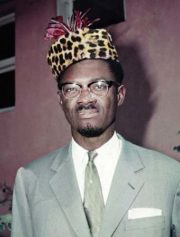Source: Max Pixel
People may not realize that their iPhone or Samsung Galaxy smartphone may have been manufactured via the killing of African people and the fueling of armed conflict. There are billions of cellphones in the world, and all of these gadgets work because of a conflict mineral known as coltan.
Coltan is a dull black metallic ore consisting of two minerals, columbite and tantalite. When refined, the tar-like coltan becomes metallic tantalum, a heat-resistant powder that holds a high electrical charge. These characteristics make tantalum a crucial component in the manufacture of capacitors, energy-storing components that control current flow in circuit boards. Tantalum capacitors are a vital part of many electronic devices, particularly mobile phones, laptops and pagers. The capacitors are also used in other products such as electric cars, optical equipment, and due to its ability to conduct electricity in extremely high temperatures, smart bomb guidance systems. The mineral is also perfect for medical equipment and surgical appliances such as bone replacements, binding agents for muscles and connectors for damaged nerves, since it does not cause an immune response in people.
The Great Lakes region in Africa is the largest producer of coltan in the world, particularly the eastern part of the Democratic Republic of the Congo (DRC), with that country accounting for about 30 percent of the world supply. Other African nations such as Rwanda, Ethiopia, Nigeria and Sierra Leone are also sources of the ore. Outside of Africa other major providers are of Coltan include Australia, Brazil, Canada, China, Colombia and Venezuela.
Everyone wants their smartphones, and multinational corporations need coltan, making it the new oil or a “black gold” of sorts at around $123 per kilogram ($56 per pound) on the open market. DRC is rich in natural resources and arguably should be wealthy like Saudi Arabia, but instead it is among the world’s poorest nations. This is because, in Central Africa, coltan is a conflict mineral — not unlike blood diamonds in Sierra Leone and Liberia — and are controlled by armed rebels and gangsters in connection with the unrest in the DRC. Although the last Congo War ended in 2003, the conflict and bloodshed continue, with a legacy of child soldiers and sex slaves, over 200,000 women and children raped, and over 5 million dead — 40 percent children — and as many displaced. Even 77 percent of the Grauer’s gorilla population has been wiped out in the last two decades due to the illegal mining — along with hunting, loss of habitat and civil unrest — with only 4,000 remaining of the world’s largest primates.
Various military groups have controlled the mineral deposits and exploited the local population. After the illicit coltan is relabeled and sent to legitimate smelters, it is processed and made into capacitors, and sold to electronics companies such as Apple, Samsung, IBM, Dell, Sony, Cisco, HP and a host of others.
The United Nations has a peacekeeping force of thousands in the DRC, in a region that has more than 30 armed groups, including anti-government forces, and a president who has remained beyond his term. Aside from the rebels, militias and organized crime organizations are profiting from control of coltan, foreign corporations exploit the country for its minerals without paying billions of dollars in taxes. The Friends of the Congo identified the following corporations as some of the key players in the foreign exploitation of the Congo: Cabot Corporation, OM Group, AVX, Eagle Wings Resources International, Trinitech International, Kemet Electronics Corporation, and Vishay Sprague in the U.S.; HC Starc and EPCOS (Germany); Nigncxia (China), and George Forrest International (Belgium). Neighboring countries in Central Africa participate in the exploitation as well. The organization noted that while Uganda and Rwanda have little or no coltan, their exports of the mineral increased exponentially during the military conflict in the DRC.
According to the U.N. Security Council, Burundi, Uganda and Rwanda and their proxy militias have benefited from conflict in the DRC and have engaged in “mass-scale looting” of the country’s natural resources. “Key individual actors, on the one hand, including top army commanders and businessmen, and government structures, on the other, have been the engines of that systematic and systemic exploitation,” said the Security Council in a resolution.
Mined for the benefit and profit of rebels, foreign militias and multinationals, coltan is killing and exploiting the poor in the Congo. As CBC reported, men, women and children are forced at gunpoint to mine the coltan, which is exported at a high profit. Using picks and shovels and toiling for 12 hours a day, miners are forced to use 19th-century techniques, mining by hand to provide the key components for 21st-century smartphones. As many as 30 percent of the workers are schoolchildren. In 2012, according to UNICEF, 40,000 children in the southern region of the DRC mined cobalt to supply the world’s lithium batteries, smartphones, cars and computers– some as young as 7 years old. These children reportedly worked in intense heat and carried back-breaking loads, without protective gear and for a dollar or two a day. They were beaten by the mining company’s security guards and forced to pay “fines” which were given to police on behalf of corrupt extortionist state officials.
“It’s possible that two children died so that you could have that mobile phone,” said Jean-Bertin, a Congolese activist ending the silence concerning the exploitation of raw materials in the DRC said to IPS News. “The DRC’s greatest curse is its wealth. The West and all the others who manufacture weapons have their noses stuck in there,” he added.
Because coltan, unlike conflict diamonds, has no “geo-fingerprints” it is difficult to control its flow and keep conflict minerals out of the legitimate stream. American and European companies have sought certification of the substance, which proves difficult if China and India, the world’s largest coltan users, fail to participate in the process. Some companies have demanded that the coltan they buy comes from nations such as Australia and Brazil. The Dodd-Frank Act passed by Congress and signed by President Obama in 2010 requires manufacturers to know the source of materials in their supply chain. However, the Trump administration chipping away at Dodd-Frank casts doubt on the fate of supply chain compliance. In 2016, the European Union reached an understanding on supply chain due diligence on conflict minerals, after years of negotiations and activist campaigns.
In addition, the International Court of Justice (ICJ) has said the removal of Coltan by an occupying foreign army is looting and constitutes a war crime. The Organization for Economic Cooperation (OECD) has created due diligence guidelines for multinational corporations regarding minerals and metals originating from the Congo, as the United Nations seeks to block funding to groups who commit human rights abuses and war crimes. On the local level, cellphone owners can do their part by recycling or donating their used gadgets, however, much more must be done to stem the tide of blood minerals such as coltan.


